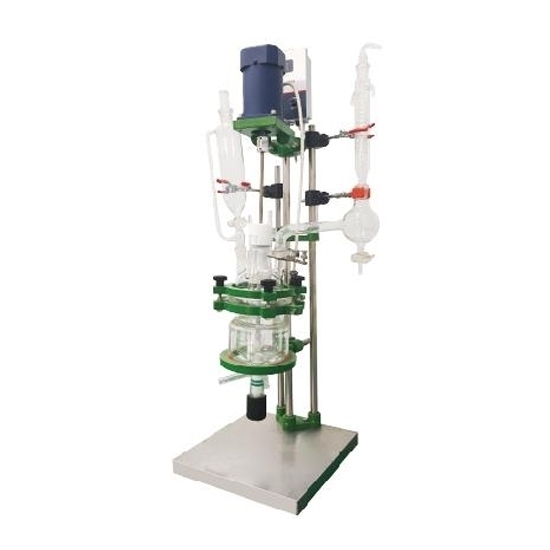
- Stock: In Stock
- Model: RDDLZ-JGR-10L
- Weight: 1.00
- SKU: RDDLZ-JGR-10L
Available Options
The 10L jacketed design of our glass reactor allows for efficient temperature control, ensuring accurate and uniform heat distribution throughout the reaction vessel. Double jacketed glass reactor can handle a wide range of reactions, including mixing, stirring, distillation, and reflux, making it an indispensable tool in research laboratories and industrial settings.
Specification
| Model | RDDLZ-JGR-10 |
| Effective Volume in the Kettle | 10L |
| Condenser Heat Exchange Area | 3 m2 |
| Constant Pressure Funnel Volume | 0.2L |
| Recovery Head Volume | 1L |
| Glass Component Material | High borosilicate 3.3 |
| Main Frame Material | SUS304 |
| Working Temperature | -80~200°C |
| Pressure in Kettle | -0.098 Mpa |
| Stirring Motor Power | 120W |
| Speed Control Mode | Electronic speed control |
| Speed Adjustment Range | 0~1000 rpm |
| Seal Material | Fluorine rubber |
| Heating Method | Bath heating |
| Power Supply | 220V~240V |
| Frequency | 50/60HZ, 1P |
| Dimension | 1280*630*700mm |
| Weight | 95kg |
Features
- 10L jacketed glass reactor adopts new high borosilicate glass, which has excellent stability and corrosion resistance.
- Digital display frequency conversion speed control, stirring speed can be adjusted, and temperature control is accurate.
- Double jacketed glass reactor assembly adopts a fluorine rubber seal to maintain the high precision seal under working conditions.
- Modular design, easy to assemble, easy to upgrade and maintain.
- Stainless steel frame, good stability.
- Jacketed glass reactors can be customized according to customer requirements.
Applications
The glass-lined reactor finds application in various industries, serving as a versatile vessel for chemical reactions and processes due to its corrosion resistance and thermal stability. It is widely employed in the pharmaceutical, petrochemical, and food industries, among others.
Tips: What is a glass-lined reactor?
A glass-lined reactor is a type of vessel used in industrial processes for containing and carrying out chemical reactions. It is constructed with a steel shell or casing, which is then lined with a layer of glass. This glass lining provides excellent resistance to corrosion from a wide range of chemical substances, making it ideal for handling corrosive materials.
The glass lining in a glass-lined reactor is typically made of high-quality borosilicate glass such as borosilicate 3.3, which has low thermal expansion and high chemical resistance. This glass layer is fused to the steel surface through a process called glass enameling or glass lining. The resulting glass lining creates a non-reactive barrier between the corrosive chemicals inside the reactor and the steel shell, protecting the vessel from corrosion and ensuring the integrity of the reaction process.
